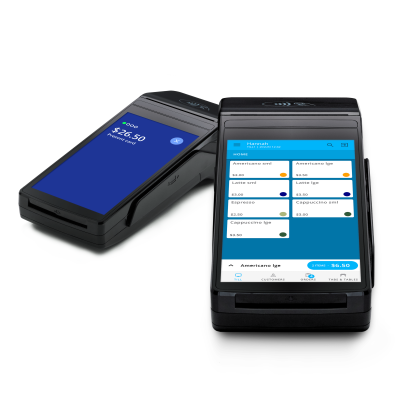Retail Pricing Strategies Every Retailer Should Know
If you're a retailer, you know that pricing your merchandise the right way is a surefire path to success. Price your wares well, and you'll have customers bursting through your door. Price them badly, and you might bring your business to the brink of disaster.
It's important to have a retail pricing strategy in place for your business. Having this strategy will allow you to identify where your products sit in the current market so you can move them most effectively.
Of course, it all depends on the kind of business you are and the types of products you're selling. So, which pricing strategy should you use? Keep reading to find out!
What is pricing?
Let's start with the basics: what is pricing?
Pricing is the process of determining what a company will receive in exchange for its products or services. Retail pricing is simply the process of setting prices for your goods.
Everything in your business depends on getting your pricing right. Being strategic and intentional with your pricing means developing an effective pricing strategy.
What is a pricing strategy?
A pricing strategy is a plan for how you will price your products or services. This strategy takes into account your company's goals, the prices of your competitors, and the perceived value of your goods or services.
Your pricing strategy should be based on a thorough analysis of your costs, the market in which you're operating, and what consumers are willing to pay. Choosing the right pricing strategy for your business will help position you advantageously in the market. A great pricing strategy should also be factored into your general retail marketing plan.
What should your retail pricing objectives be?
Your retail pricing objectives will be based on your specific goals as a company. Do you want to increase sales? Boost profits? Enter a new market? Answering these types of questions will help determine the right retail pricing strategy for you.
There are a variety of pricing objectives, and the right one for your business will depend on what you're trying to achieve. For example, if you're looking to increase sales, you might want to consider a penetrative pricing strategy.
Factors that can affect your retail pricing
There are a lot of factors that can affect your retail pricing. Here are some of the most common ones:
-
The cost of your goods or services
-
The price of your competitor's goods or services
-
Economic conditions (e.g. inflation, recession)
-
Consumer demand
-
Changes in government policy
-
Other activities, like your digital marketing for retail
These are just a few examples - ultimately, anything that can have an impact on your business can also affect your pricing strategy.

Discover what’s possible with the Epos Now Pro range
Take your restaurant to the next level with Epos Now's suite of powerful card machines.
- Send orders directly to your kitchen
Pass orders directly to your kitchen to improve order output times and accuracy.
- Manage tables
Track time-at-table and manage floor plans in real-time to boost table turnover.
- Simple product management
Add and amend individual products, or make changes in bulk that appear instantly.
12 pricing strategies every retailer should know and use
Now that we've covered the basics, it's time to do a deep dive into the most common pricing strategies available to you.
Manufacturer suggested retail pricing
The manufacturer suggested retail price (MSRP) is the price that the manufacturer of a product recommends that retailers sell it for. This is just a suggestion, and retailers are free to set their own prices. In fact, in many cases, is it better if you set your own price because only you can know the needs of your business.
However, MSRPs can be useful for setting a baseline price for your products. If you're selling goods that are similar to those of your competitors, using the MSRP can help you stay competitive while still making a profit.
Cost-plus pricing
Cost-plus pricing is a pricing strategy in which the retailer sets its prices by adding a profit margin to the cost of the goods.
To calculate cost-plus pricing, simply add your desired profit margin to the cost of the product. For example, if you wanted to make a 20% profit on a product that costs $10, you would charge $12 for it.
This pricing strategy is fairly simple and easy to use, which makes it a popular choice among retailers. However, it doesn't take into account the prices of your competitors or the perceived value of your goods.
You should always be reviewing the offers of your competitors to ensure you're staying competitive.
Competitive pricing
Competitive pricing is a pricing strategy in which retailers set their prices based on the prices of their competitors. The goal of competitive pricing is to be the low-price leader in the market that undercuts your competition.
To do this, you'll need to constantly monitor the prices of your competitors and adjust your own accordingly. This can be a time-consuming process, but it's necessary if you want to stay ahead of the competition.
Playing the competitive pricing game can be dangerous since a race to the bottom for prices can affect your profits.
You often see a competitive pricing strategy in action in Black Friday marketing, when different companies race to get the lowest price possible to attract more customers. It's also common in Christmas marketing.
Value-based pricing
A value based pricing strategy is when the retailer sets its prices based on the perceived value of its goods or services. In other words, you're charging what your customers believe your goods or services are worth.
To do this, you need to have a good understanding of your target market and what they're willing to pay for your products. You also need to be able to communicate the value of your goods or services effectively. You really need to offer something valuable to your customers if you want them to part with their cash.
Price skimming
Price skimming is a pricing strategy in which the retailer sets a high price for their goods or services when they first enter the market. The goal of price skimming is to recover the costs of developing and marketing the product as quickly as possible before competitors enter the market and drive prices down.
This pricing strategy can be risky, as it requires that you have a solid understanding of your target market and what they're willing to pay for your product. If you misjudge the market, you could end up losing money.
Penetration pricing
A penetration pricing strategy is when the retailer sets a low price for their goods or services when they first enter the market. The goal of penetration pricing is to attract customers and gain market share quickly.
This pricing strategy can be effective, but it's important to make sure that you don't price your goods or services too low. If you do, you may not be able to make a profit. Some companies can do this because they have large amounts of investment that can protect them from the need to make a profit.
Keystone pricing
A keystone pricing strategy is whenf the retailer doubles the cost of their goods or services and marks them up by 100%. In other words, if something costs the retailer $1 to make, they would sell it for $2.
This pricing strategy is often used by retailers who sell goods or services that are considered to be necessity items. For example, supermarkets often use keystone pricing for items like milk and bread. These types of products also tend to be very inexpensive.
Discount pricing
A discount pricing strategy is when pricing strategy in which the retailer offers their goods or services at a reduced price. This can be done in a variety of ways, such as offering sales, coupons, or discounts for bulk purchases.
Discount pricing is a popular strategy because it can attract customers and boost sales. However, it's important to make sure that you don't discount your goods or services too much, as this can eat into your profits.
You often see discount pricing in action in email marketing for retail. Retailers will send potential customers emails with exclusive offers, often at a discount, in order to entice them to buy.
Bundle pricing
Bundle pricing is a pricing strategy in which the retailer offers their goods or services in a package deal. For example, a retailer might offer a discount if you buy multiple items from them.
Bundle pricing is a popular strategy because it can attract customers and boost sales. However, it's important to make sure that you don't bundle your goods or services too tightly, as this can limit your profits.
You often see bundle pricing in action in in store retail marketing, where offers like "buy one, get one free" are more appealing because of the customer's physical proximity to the products.
Freemium pricing
Freemium pricing is a pricing strategy in which the retailer offers a basic version of their goods or services for free and charges for premium features. For example, a retailer might offer a basic email service for free and charge for additional features, such as more storage space or a custom domain.
Freemium pricing is a popular strategy because it can attract customers and boost sales. However, it's important to make sure that you don't offer too many premium features, as this can eat into your profits.
Psychological pricing
Psychological pricing is a pricing strategy in which the retailer uses pricing tricks to influence the perceived value of their goods or services. For example, a retailer might use a price ending in .99 to make their goods or services seem cheaper than they actually are.
Psychological pricing can be effective, but it's important to make sure that you're not using pricing tricks that are misleading or dishonest. If you are, you could end up losing customers.
Premium pricing
Premium pricing is a pricing strategy in which the retailer charges a high price for their goods or services. This is often done for products that are considered to be luxury items or have a high perceived value.
Premium pricing can be effective, but it's important to make sure that your product lives up to the high price tag.
Dynamic pricing
Dynamic pricing is a pricing strategy in which the retailer changes their prices based on demand. For example, a retailer might charge more for their goods or services during peak times and less during off-peak times
Dynamic pricing can be effective, but it's important to make sure that you're not changing your prices too often or too drastically.
Loss-leading pricing
A loss leader pricing strategy is when the retailer charges a low price for their goods or services in order to attract customers. The hope is that customers will then purchase other, more profitable items from the retailer.
Loss-leading pricing can be effective, but it's important to make sure that you're not selling your goods or services at too low of a price. If you are, you could end up losing money.
Anchor pricing
Anchor pricing is a pricing strategy in which the retailer uses a reference price to influence the perceived value of their goods or services. For example, a retailer might use a high-end product to make their own products seem like a better deal in comparison.
Anchor pricing can be effective, but it's important to make sure that you're not using a reference price that is misleading or dishonest.
Channel-based pricing
Channel-based pricing is a pricing strategy in which the retailer charges different prices for their goods or services depending on the channel through which they're sold. For example, a retailer might charge a higher price for their goods or services if they're sold through a brick-and-mortar store than if they're sold online.
Wholesale pricing
Wholesale pricing is a pricing strategy in which the retailer charges a lower price for their goods or services if they're purchased in bulk. For example, a retailer might offer a discount if a customer buys 10 items.
Wholesale pricing can be effective, but it's important to make sure that you're not selling your goods or services at too low of a price.
Final thoughts
No matter what pricing strategy you choose to go with, you'll need the best possible tools in your arsenal to make your retail business a success.
The Epos Now retail POS or guest service POS systems provide online store options, payment processing, loyalty programs, inventory management, a versatile retail POS system that meets your retail business needs, and more.
-
Take advantage of tools for employee and inventory management tools, all in one place
-
Detailed sales analytics that reveal top-performing products and employees
-
Sell online, accept payments from Google and Apple Pay with cut-price payment processing fees
-
Integrate with a fully loaded ecommerce platform that syncs with the best retail pos systems
-
Build using sophisticated business software, with apps for marketing, to bookkeeping, to payroll
Want to find out more about our offer? Get in touch below!




